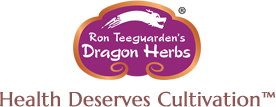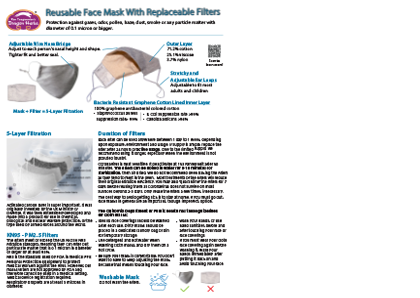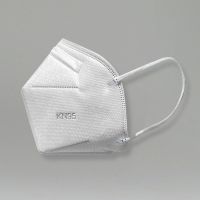This is a demo store. No orders will be fulfilled.
Call Our Herbalists
Herbal Consultations
Reusable Face Mask with Replaceable Filters (4 Filters)
- Clearance Sale: 50% Off. Consumer accounts only, while supplies last.
- Protects against gases, odor, pollen, haze, dust, smoke or any particulate matter with diameter of 0.1 micron or bigger.
- Washable and sterilizable mask with four (4) PM2.5/kN95 filters
- Bacteria resistant cloth with 5-layers of filter
- 100% graphene antibacterial cotton
- Activated carbon cloth layer of protection
- Adjustable wire nose bridge
- Stretchy and adjustable ear loops
- Soft, lightweight, breathable, comfortable masks
- No air valves
- Machine wash warm
- Material and color may vary slightly
- Non-medical grade mask
- Wash before use
- Final Sale Item
Product Description
The reusable face mask contains 4 replaceable PM2.5/kN95 filters. The masks are washable, but not the filters. With the filter, the mask protects against gases, odor, pollen, haze, dust, smoke or any particulate matter with diameter of 0.1 micron (one millionth of a meter) or bigger. The mask will hold a KN95 filter made of 5 layers of high technology filtration.
Its innermost layer is 100% graphene antibacterial cotton which is a bacteria resistant cloth. It has suppression rates over 99% against Staphylococcus aureus, E. Coli and Candida albicans.
The middle layer, the inserted filter, is activated carbon cloth. Activated carbon layer is super important. It was originally invented by the UK Ministry of Defense. It was then extensively developed and made into a product for use in chemical, biological and nuclear warfare protection, of the type used by armed forces around the world.
The outermost layer is a supermicro-satin fabric, which makes the mask lightweight and breathable.
The pack contains four PM2.5/kN95 filters. These filters meet or exceed the US NIOSH N95 filtration standard, meaning they can filter out particulate matter that is 0.1 micron in diameter or larger by at least 95%.
N95 is the standard used by FDA in medical PPE Personal Protection Equipment to protect medical workers against the virus. However, our masks/filters are not approved by FDA and therefore cannot be used in a medical setting. Medical device registration required.
Respiratory droplets are at least 5 microns in diameter.
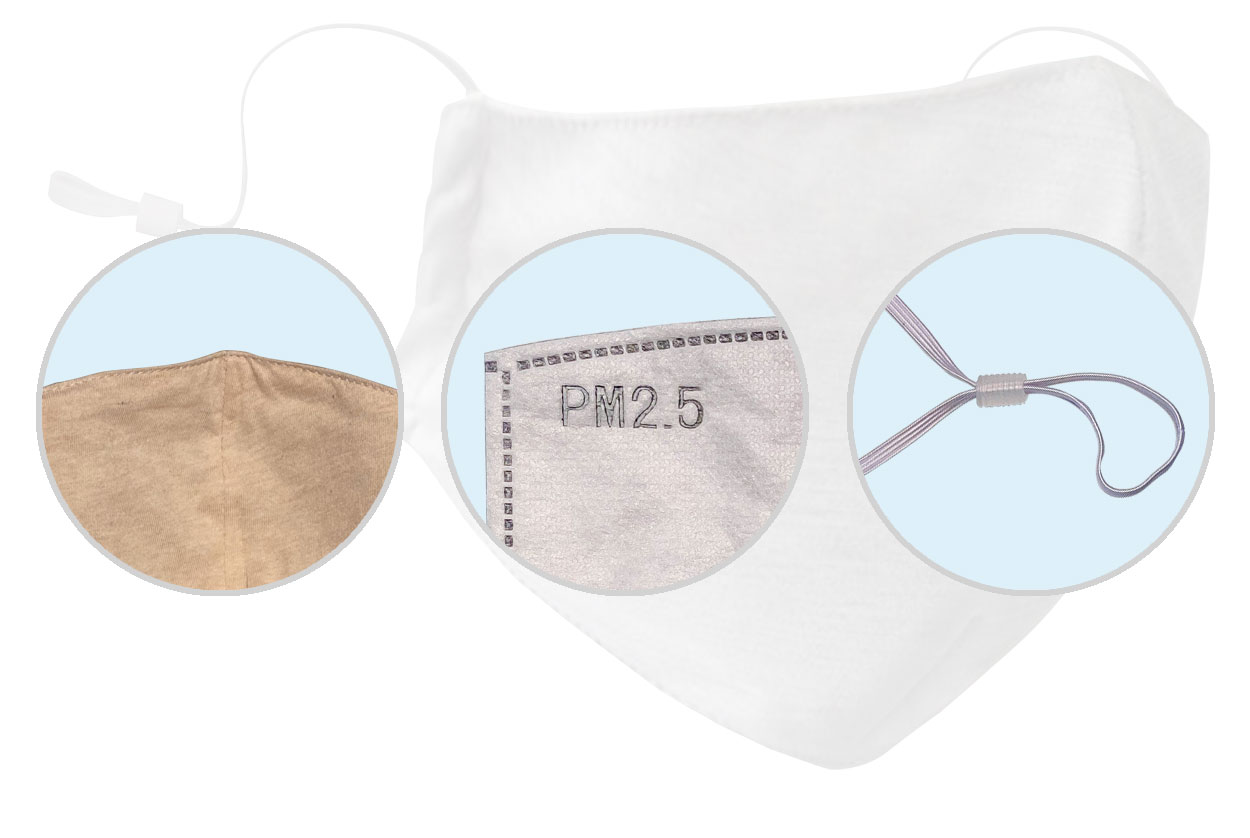
The mask's adjustable wire nose bridge adjusts to each person's nasal height and shape for a tighter fit and better seal. It's stretchy and adjustable ear loops adjusts to fit most adults and children.
The mask is designed not to have the air valve feature as the air flowing outwards through the one-directional valve is not filtered. The air would escape without going through the filters. If one is sick, they could release their respiratory droplets into the public airway, which is not good for protecting others.
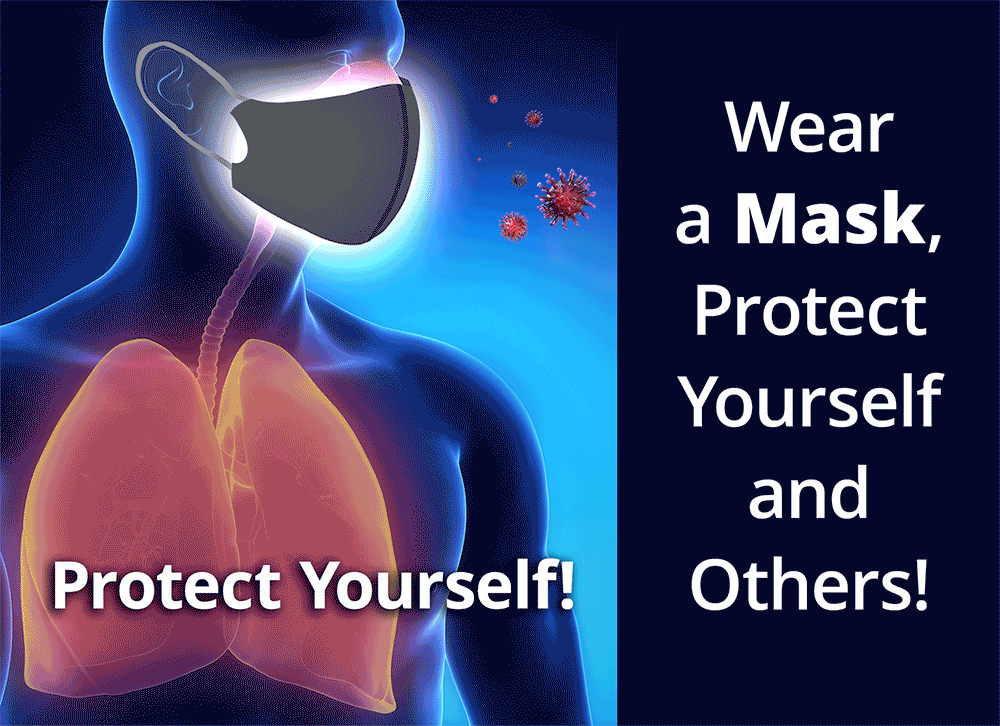
Each filter can be used anywhere between 1 day to 1 week, depending upon exposure, environment and usage. If supply is ample, replace the filter after 24 hours of active usage. Due to the limited supply, we recommend using it longer, especially when the environment is not polluted (dusty).
Coronavirus is heat sensitive. It deactivates at 133 degrees Fahrenheit after 30 minutes. The filters can be boiled in water for 5-10 minutes for sterilization, then air dried. We do not recommend oven baking the filters as they tend to melt in the oven. Most treatments of the filters will reduce their original filtration efficiency. You may also “quarantine” the filters for 7 days before reusing them as Coronavirus does not survive on most surfaces beyond 2-3 days. Only reuse the filters a few times, if necessary.
The best way to avoid getting sick is to stay at home. If you must go out, face masks in general are an important, though imperfect, option.
- Ideally, face coverings should be washed after each use. Dirty masks should be placed in a dedicated laundry bag or bin for temporary storage.
- Use detergent and hot water when washing cloth masks, and dry them on a hot cycle.
- Be sure your mask is comfortable; you don’t want to have to keep adjusting the mask, because that means touching your face.
- Wash your hands, or use hand sanitizer, before and after touching your face or face coverings.
- If you must wear your cloth face covering again before washing it, wash your hands immediately after putting it back on and avoid touching your face
According to New York State Department of Health:
“PM2.5 refers to tiny particles or droplets in the air that are two and one half microns or less in width. Particles in the PM2.5 size range are able to travel deeply into the respiratory tract, reaching the lungs. Exposure to fine particles can cause short-term health effects such as eye, nose, throat and lung irritation, coughing, sneezing, runny nose and shortness of breath. Exposure to fine particles can also affect lung function and worsen medical conditions such as asthma and heart disease. Scientific studies have linked increases in daily PM2.5 exposure with increased respiratory and cardiovascular hospital admissions, emergency department visits and deaths. Studies also suggest that long term exposure to fine particulate matter may be associated with increased rates of chronic bronchitis, reduced lung function and increased mortality from lung cancer and heart disease. People with breathing and heart problems, children and the elderly may be particularly sensitive to PM2.5.”
---https://www.health.ny.gov/environmental/indoors/air/pmq_a.htm
PM2.5 comes primarily from automobile exhaust, off-road vehicle (e.g. construction equipment, snowmobile) exhaust and other operations that involve the burning of fuels such as wood, heating oil, coal and natural sources such as forest and grass fires. Indoor sources of PM2.5 are tobacco smoke, cooking (e.g., frying, sautéing, and broiling), burning candles or oil lamps, and operating fireplaces and fuel-burning space heaters (e.g., kerosene heaters).
Question: Where do I insert the replaceable filters?
Answer: Insert the PM2.5/N95 filter through the sleeve opening on the pink side of the mask. Push the filter in until it is centered inside the mask.
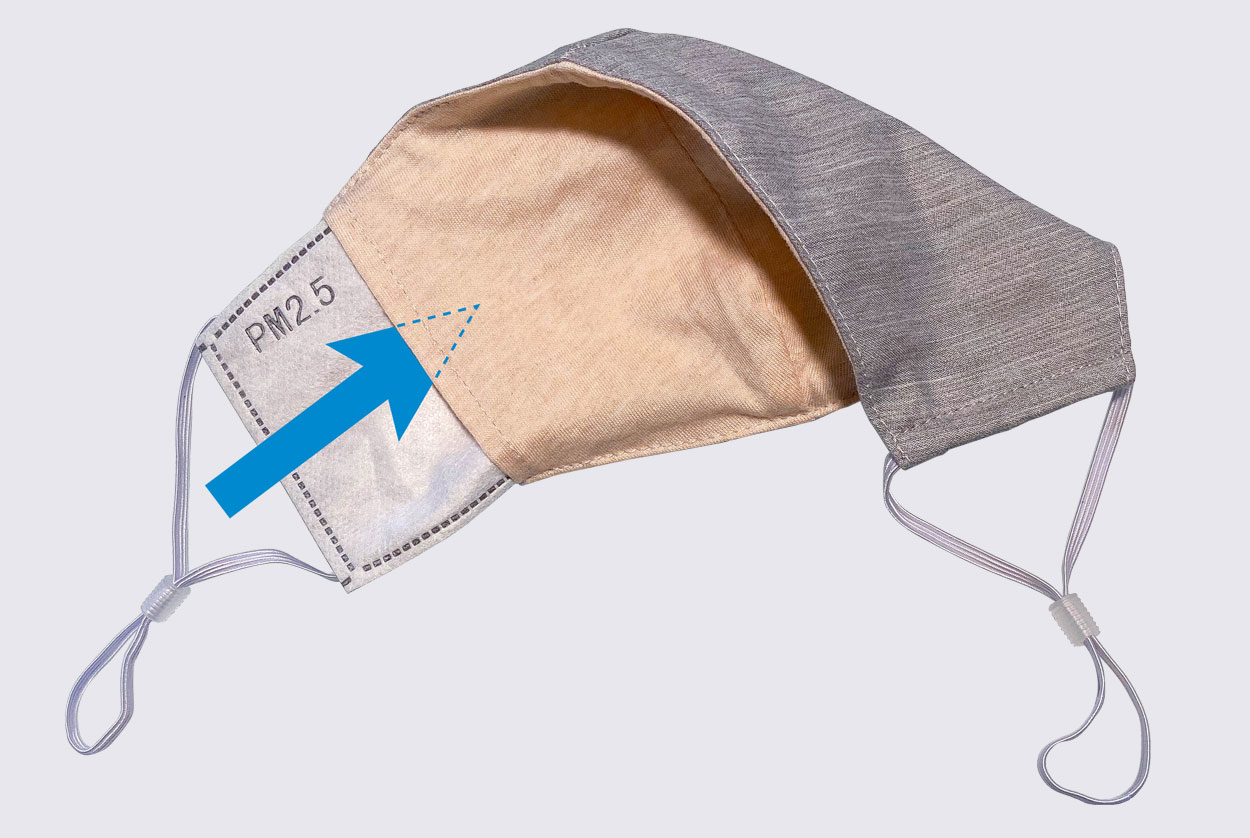
Covid-19 Prevention and Control Plan (5th Edition) published by the National Health Commission (NHC) of China on 2/19/2020
“Aerosol transmission of coronavirus is possible when someone is exposed to high concentrations of aerosol in a relatively closed environment for a long time.”
The difference between aerosols and droplets is that droplets’ diameters are greater than 5 microns (1 millionth of a meter) and cannot stay suspended in the air while aerosols are airborne with diameters smaller than 5 microns.
NHC is the lead agency in mainland China coordinating the national efforts to combat the coronavirus outbreak. The aerosol transmission (airborne) was added to the 5th Edition of their Covid-19 Prevention and Control Plan published on 2/19/2020. It was listed in their 4th Edition as “pending verification” but was since officially added as a possible transmission route, in addition to respiratory droplets and contact.
Associated Press article published on 3/11/2020
“They (researchers) found that viable virus could be detected up to three hours later in the air, up to four hours on copper, up to 24 hours on cardboard and up to two to three days on plastic and stainless steel.
The tests were done at the National Institutes of Health’s Rocky Mountain Lab in Hamilton, Montana, by scientists from the NIH, Princeton University and the University of California, Los Angeles, with funding from the U.S. government and the National Science Foundation.”
New York Times article “More Americans Should Probably Wear Masks for Protection” published on 3/27/2020
“When researchers conducted systematic review of a variety of interventions used during the SARS outbreak in 2003, they found that washing hands more than 10 times daily was 55 percent effective in stopping virus transmission, while wearing a mask was actually more effective — at about 68 percent. Wearing gloves offered about the same amount of protection as frequent hand-washing, and combining all measures — hand-washing, masks, gloves and a protective gown — increased the intervention effectiveness to 91 percent.”
